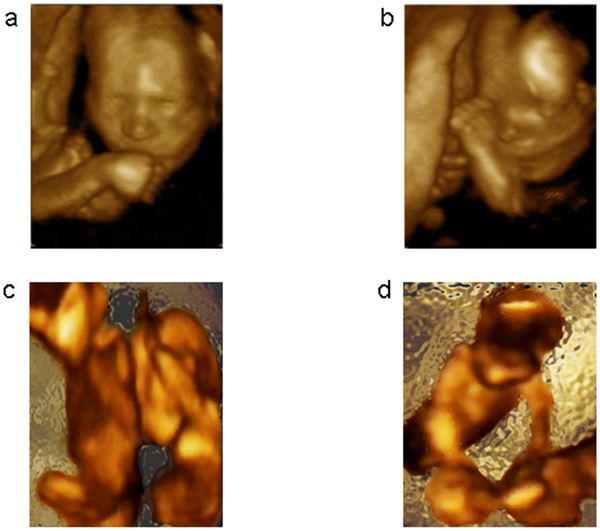
© PLoS ONETypes of movements. a, Video frame representing a self-directed movement towards the mouth. b, Video frame representing a self-directed movement towards the eye. c, Video frame representing the foetus reaching towards and “caressing” the back of the sibling. d, Video frame representing the foetus reaching towards and “caressing” the head of the sibling.
Humans have a deep-seated urge to be social, and new research on the interactions of twins in the womb suggests this begins even before babies are born.
Researchers from the University of Padova in Italy have been studying pregnancies involving twins. Leader of the team, psychologist Umberto Castiello, explained that
newborns appear to be already "wired" to interact socially with other humans soon after birth, and previous research has demonstrated that within only a few hours after birth, babies can imitate gestures of people around them and make other social interactions. Studying twins in the womb made it possible to see investigate the pre-wired hypothesis and see if socialization was already apparent while still in the womb.
The study, which was published in the
Public Library of Science One (PLoS One), used four-dimensional ultrasonography to make 3D videos of twins at 14 and 18 weeks of gestation. The five pairs of twins were found to be reaching for each other even at 14 weeks, and making a range of contacts including head to head, arm to head and head to arm. By the time they were at 18 weeks, they touched each other more often than they touched their own bodies, spending up to 30 percent of their time reaching out and stroking their co-twin.

Comment: For more information about the benefits of Meditation, visit the Eiriu Eolas Breathing and Meditation site here